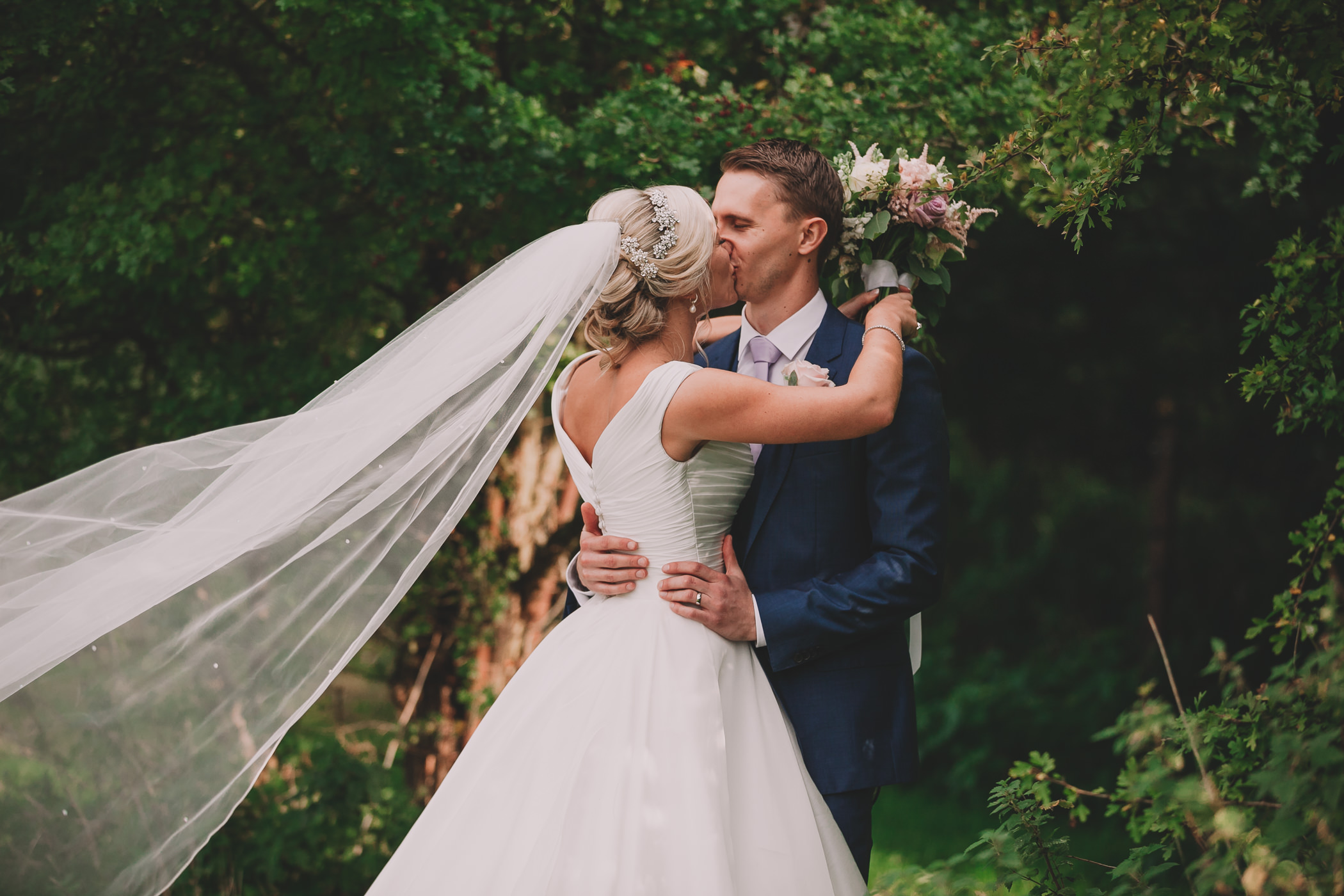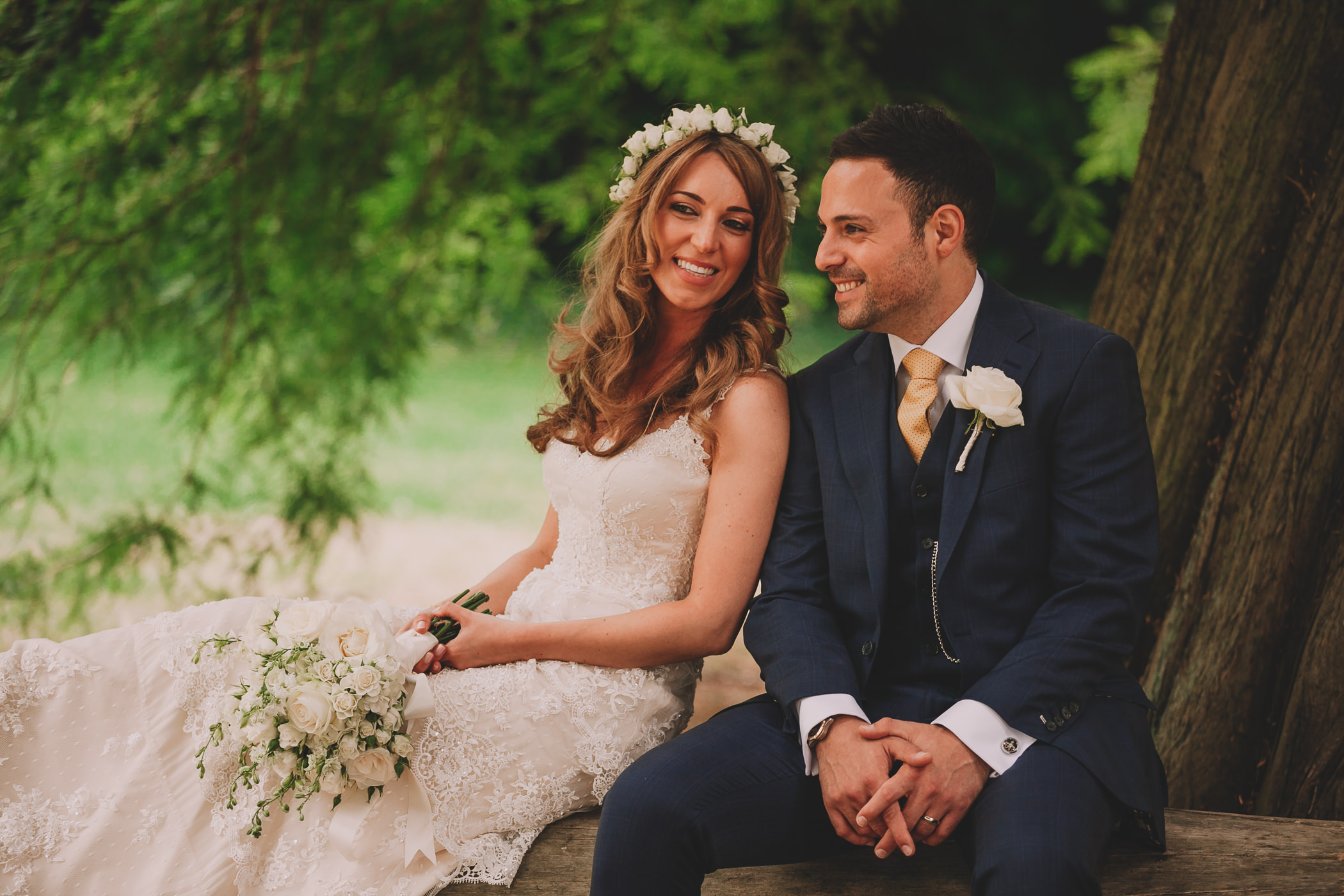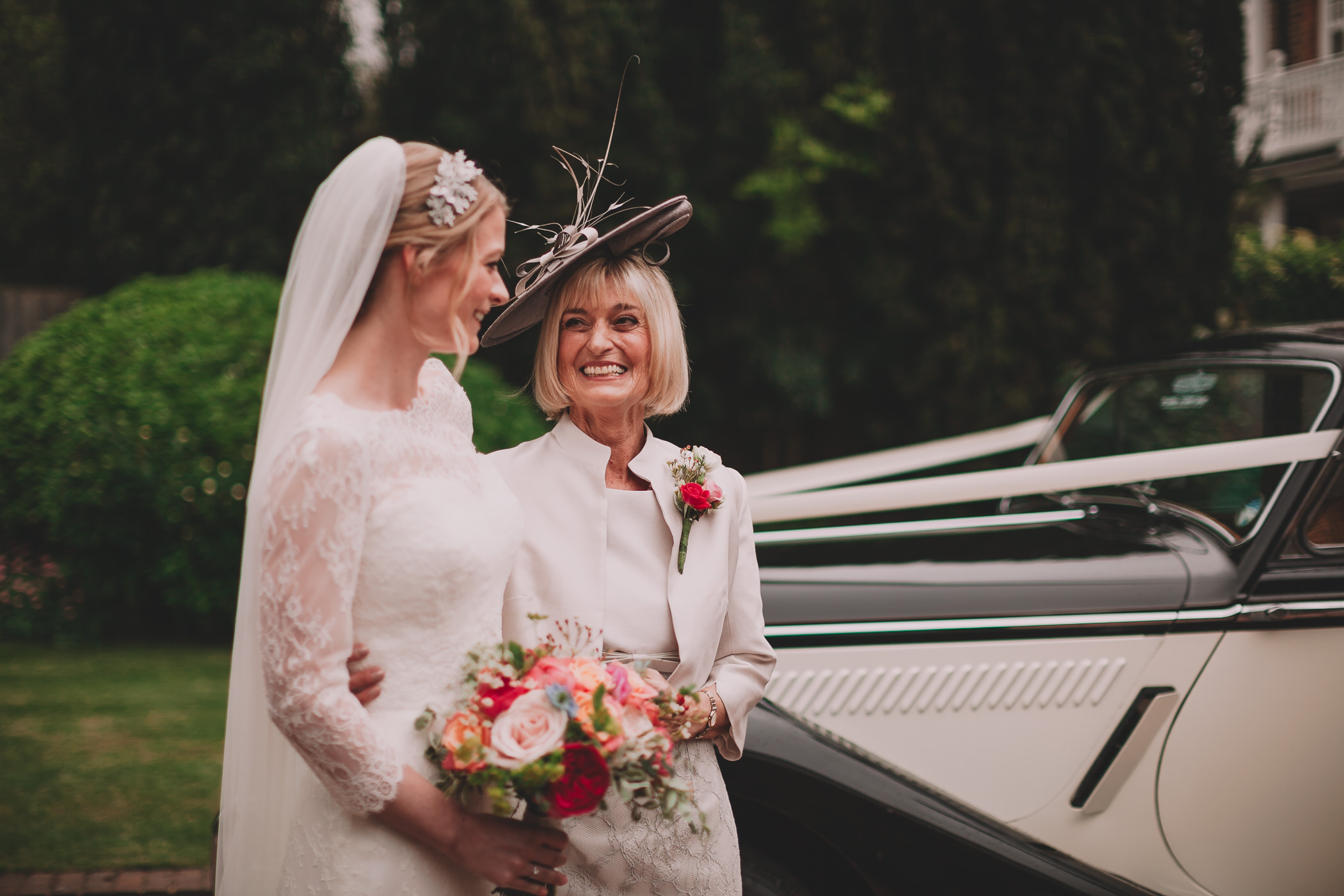When I have my pre-wedding consultation with couples, it seems that the hated words when discussing wedding portraiture are ‘posed’ ‘stiff’ and ‘unnatural’. In contrast, everyone loves the idea of ‘reportage’, ‘candid’, ‘natural’ photos. It would be ideal, to tell the couples that as a wedding photographer, I intend to float around their wedding, like a butterfly, just capturing little moments as they unfold, affecting nothing.
By definition, ‘candid photography’ should really mean that there is no interaction between the subject and the photographer. However, the demand is for every shot to be captured by a wedding photographer: from the bride having her veil adjusted by her emotional, weeping mother, to the smiling couple emerging from the church to hordes of cheering family and friends throwing fistfuls of colourful confetti in one, coordinated sweep! Don’t get me wrong, a talented photographer with good equipment will no doubt capture some lovely moments like this throughout a typical, wedding day. They will know where to be at the right moments and will use their experience to capture some touching incidents. However, they will be relying on the right lighting, right positioning of people, and the photographer to be in the right place with their camera poised to capture that exact moment. That seems a lot of risk for a day of such importance!



Not all moments do unfold naturally if left to chance. As the couple leaves the church, auntie Jean might indeed throw a few wisps of confetti at the couple in an awkward, clumsy way but everyone else may be rummaging in their clutch bags trying to find their rose petals at that moment. You may get that confetti shot but it might be incomplete and uninspiring. Not the shot you envisioned of yourselves walking through an ordered line of your friends and family as they simultaneously and gracefully shower you with confetti. Similarly, if you want that classic shot of you with your mum, as she adjusts your veil, looking teary eyed, before you leave home together then this will likely take work and intervention from the photographer. As normal people, we don’t all have the Kate Middleton natural laugh across our face throughout the day.

Equally, unfortunately, the bride and groom don’t take an impromptu walk into the sunset just after the ceremony, hand in hand and look at each other in a fit of giggles. The groom doesn’t spontaneously pick his bride up and spin her around in the exact moment that the photographer has his camera fixed on them, with a perfect sun beam flaring behind them. The couple don’t decide to walk through a path shadowed in roses or sit and cuddle under a tree. These moments just don’t happen. It is necessary to take the bride and groom off for 30 minutes alone with some directing from the photographer to achieve these idyllic pictures which everyone wants.

I used to feel guilty when I met couples and they would say ‘we chose you because your shots are so natural’ when I know that a lot of my shots are staged. However, I have come to accept and love my technique. Yes, as a wedding photographer, I am by your side a lot of the day and I often ask for you to position and pose. However, there is a skill to this that makes for candid images that feel natural and capture bits of emotion that may have been missed otherwise.
Also, in my opinion, it is possible to intervene but still to remain unimposing as a person. There is the ‘Austin Powers’ caricature of photographers asking subjects to growl and crawl across the ground and dominating a scenario. I used to worry that I wasn’t the kind of person who could bellow loudly enough to get the wandering children and deaf grandparents to attend to the group shot; bossy enough to get the groomsmen to forget the champagne and stand in a suitable line behind the happy couple. However, through experience, I have found that it is actually more about relaxing your subjects and that shouting, ordering and demanding poses does not work anyway. Often, people are nervous in front of the camera and whilst I need to be confident to inspire confidence, I don’t need to be so extravert that I intimidate my subjects. As a photographer, I find myself beaming at the bride from behind the camera and often mimicking them, acting out poses myself for them to try. For me, the odd, quiet word; a lot of confidence-boosting smiling and lots of appropriate body language does the trick in a totally unobtrusive manner.
I have actually never been the kind of photographer to be far in the distance just capturing. I have always been right there with my subjects posing them. My grandad would be in the distance with his camera, capturing reality and feel disappointed if you caught him taking a picture and posed. Perhaps I don’t have the patience for this because in 9/10 shots something ruins the moment. Also, whilst these shots depict the exact reality, for me, photography provides an opportunity to use a bit of magic to create a more perfect version of reality; to add a little energy and sparkle to a real life moment. For me, photographs are like pieces of artwork – still lifes capturing the essence and emotion of an important moment in someone’s life in a creative way. In order to achieve this, I prefer to orchestrate a shot. Possibly, this is also why I became a wedding photographer rather than a news/press photographer – for whom an orchestrated shot would be inappropriate and unprofessional. I like to make my shots happen rather than hope that everything falls in to place at the right moment. Let me be clear, though, weddings are not photoshoots and getting excellent photographs shouldn’t be the main purpose of the day. I always keep this in mind no matter how cooperative the couple are and keen to do whatever is needed of them. With practice you can do very subtle things to manipulate the course of a wedding day to get amazing images without interrupting the natural flow of things.

The skill is making a planned portrait appear natural and spontaneous through the skill and patience of the photographer. I have learnt not to feel guilty about this but to see it as a skill which a true professional must acquire. In order for shots to feel natural you must capture the fleeting moments of reality that make a refreshing change from the posed positions and forced smiles associated with standard, portraits. It’s about capturing the in-between moments where you reach into your subjects personalities and create an image that truly reflects who they are. I like to create shots that feel off guard and candid (even if they aren’t). Once I have suggested, positions, locations, movements and expressions the couple relaxes in the frame and the shots happen. What begins as a fake laugh soon becomes a real one and everyone’s posture relaxes.
Some direction I usually work with:
1 – Hands
Giving the couple something to do with their hands is vital. At a wedding I will often place the groom’s arms around the bride’s waist and encourage the bride to pose with her bouquet. Giving the hands a purpose resolves an impression of tension.


2 – Leaning or sitting
Again leaning or sitting can also help, leaning up against a tree or being sat by one.


3 – Eye Contact
Also, I always encourage eye contact. I often ask people to look at each other. Whether this is the bride and groom or the groom and the best men. This does feel weird and unnatural to begin with but, in my experience, it always leads to a natural photo. This is because looking at each other creates that natural moment when they catch eyes and release tension. Look down, away or past the camera will make them look as if they have been caught off guard. Looking away can create a detachment and impression of spontaneity.


4 – My positioning and composition
Knowing where to be, as a photographer, is key. Often, having a second photographer can really help get these ‘candid’ shots. The same shot can yield completely different results from two different vantage points. The front on shot can look stiff but the voyeuristic side shot can feels natural. Otherwise, I ask models to imagine that they are walking towards somewhere different. This can be less effective depending on the imagination and commitment of the subject though.
Another trick is in the composition by the photographer. By placing the couple at the bottom of the frame, this can also make the shot feel more relaxed, less obvious, and not adhering to standard headshot rule. Also my camera settings, depth of field, shoot through leaves, feel spying. They are in their own world being captured.


5 – Two Photographers
At a wedding, you don’t have long to experiment and warm into shots and I want to keep direction to minimum, people are tense and nervous anyway. So often using two cameras is the best tactic. Ask the couple to pose for one camera, and the key shot is being taken from the side on the other camera. The second photographer also has more time to capture these natural details whilst the main shots are being taken.




